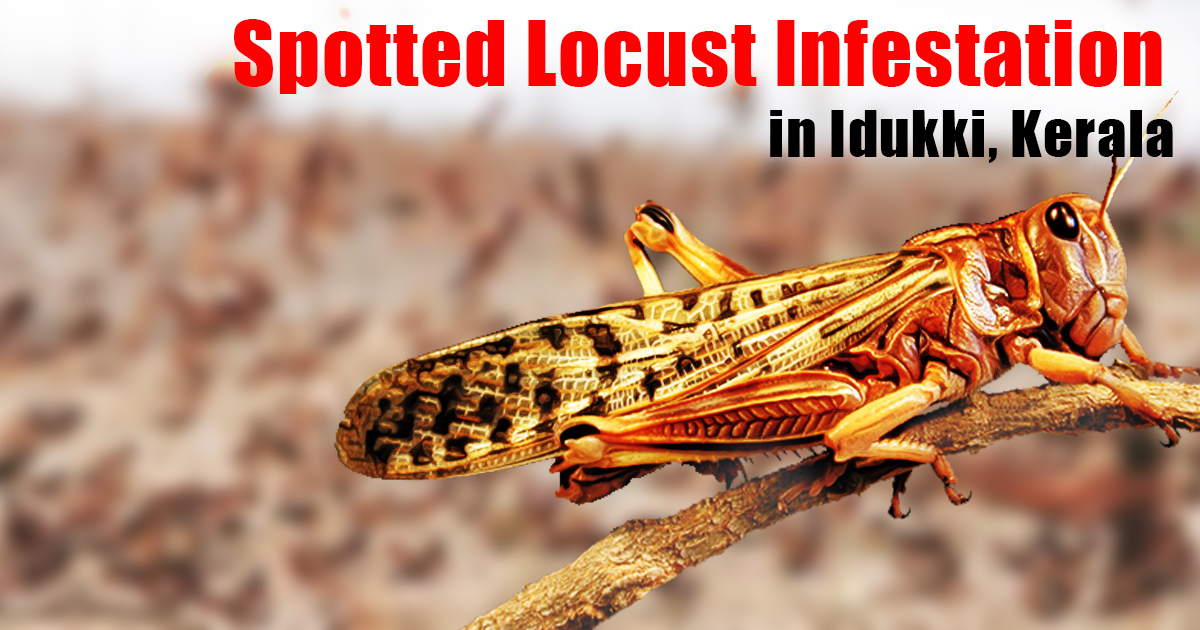
Context: Farmers in Idukki, Kerala, are facing an agricultural crisis due to an infestation of spotted locusts.
Key Characteristics:
- Defense Mechanism:
Spotted locusts possess bright warning colors to deter predators. They also eject toxic foam as a defense mechanism and can produce a sharp rasping sound for additional protection. - Movement:
These locusts have slow movement, which makes them relatively easy to catch. They typically jump low and do not fly extensively.
Causes of Locust Swarming:
- Gregarisation:
Locusts shift into a gregarious phase due to environmental triggers like excessive rainfall, flooding, and irrigation in cereal crops. - High Rainfall:
Increases lush foliage, leading to higher nymph populations and encouraging them to gather together. - Flooding:
Expands breeding grounds by creating moist conditions conducive to egg-laying. - Temperature:
Lower temperatures enhance nutrient absorption and slow down growth, extending the locust lifecycle. - Soil Moisture:
Post-flooding, wet soil enables continuous egg-laying even during dry spells, sustaining the locust population. - Serotonin Surge:
When locusts sense the presence of other locusts through sight, smell, or touch, serotonin levels rise, activating the genes responsible for gregarious behavior. - Hopper Contact:
Physical contact between hoppers (young locusts) leads to gregarisation, prompting mass movement in search of food, causing severe crop damage.




